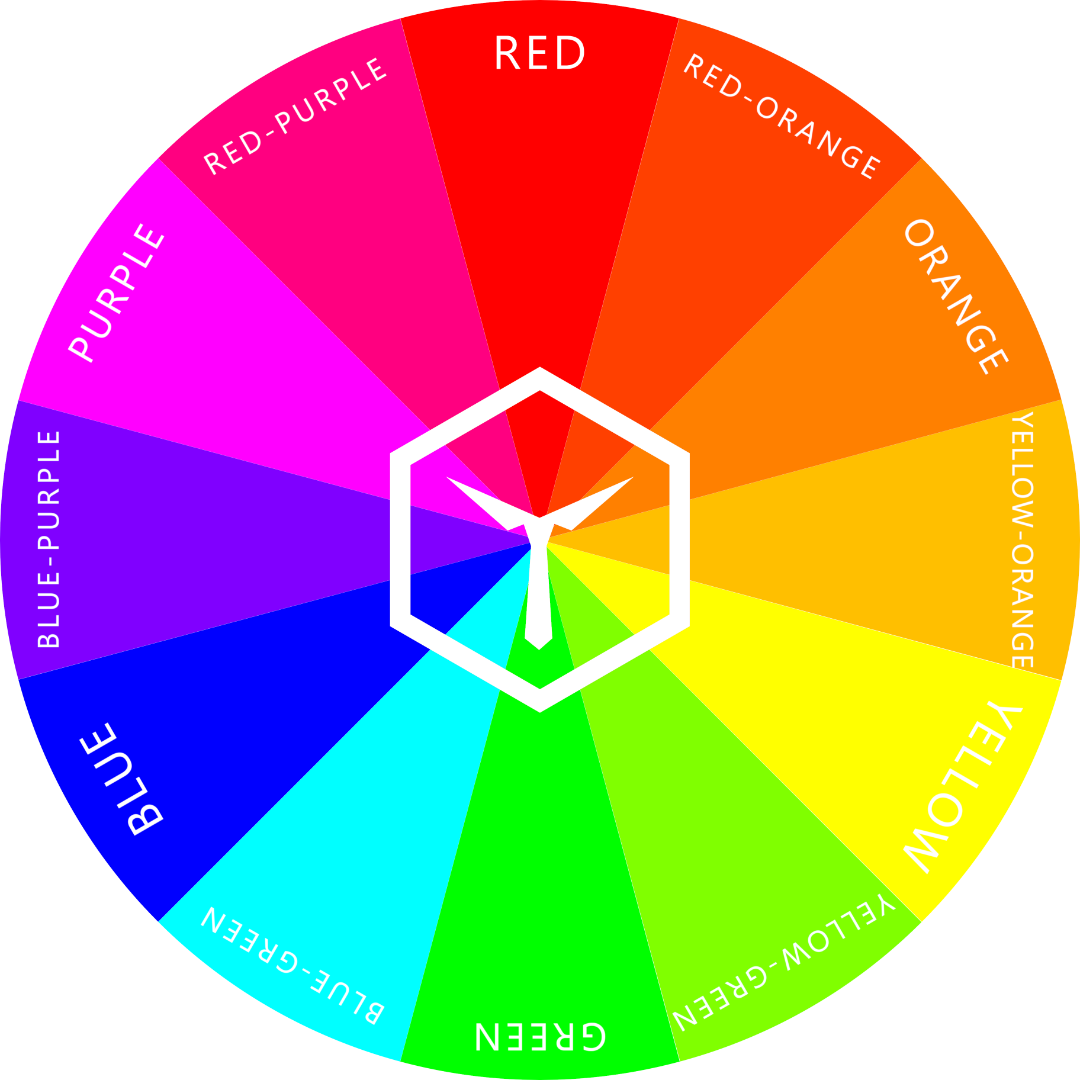How to Match Makeup to Clothes
For quick and easy results, choose blush colors similar to your skin tone and eyeshadow colors similar to your clothes’ colors without being too contrasting to your skin tone.
There's nothing more frustrating than getting all dolled up, only to have your makeup clash with your outfit. Luckily, matching your makeup to your clothes is easier than you think.
It all boils down to color theory and how you use it. So, in this article, we’ll describe some key points that you should pay attention to if you wish to match your makeup to your clothes beautifully.
Pairing Makeup to Clothes Colors
To match makeup to clothes, it is best to pick eyeshadow and blush colors that either complement or contrast your outfit’s main color(s). They should suit your skin tone as well.
For quick and easy results, choose blush colors similar to your skin tone and eyeshadow colors similar to your clothes’ colors without being too contrasting to your skin tone.
Depending on the type of natural coloration you have as a person, the perfect makeup to match your clothes can vary quite considerably.
Here’s a short table as an overview:
| Skin Tone | Clothing Color(s) | Eyeshadow Color | Blush Color |
|---|---|---|---|
| Dark | Bold | Neutral | |
| Dark | Light | Light | Neutral |
| Bold | Neutral / Bold | Neutral / Bold | |
| Dark | Dark | Neutral / Dark | |
| Caucasian / Tan | Light | Neutral / Light | Neutral / Light |
| Bold | Bold | Neutral / Bold | |
| Dark | Dark / Neutral | Neutral / Dark | |
| Light | Light | Light | Neutral |
| Bold | Bold / Neutral | Neutral / Bold |
Obviously, this list isn’t exhaustive by a long stretch. It’s just to give you a quick overview of the situation and provide you with a rough guideline to use.
If you stick to the information in the table, you will rarely go wrong. But let’s get into more detail on the subject so you can make even more precise and accurate decisions when it comes to matching your favorite makeup to your clothes.
This model’s makeup pairs perfectly with her clothing. The red-orange color of the eyeshadow and blush complements the green turtle neck and is repeated in the socks.
Key Guidelines for Matching Makeup to Clothing:
Make sure your makeup contrasts your makeup in a good way.
If your clothes are dark, wear dark makeup. If they’re light or bright, wear light or bright makeup.
Wear makeup and clothes colors that don’t clash with your skin tone and hair color.
When in doubt, stick to neutrals like black, brown, skin, nude, and beige. They always look great with any outfit.
With these guidelines in mind, it’ll be a breeze to match your makeup to clothes. But there’s more. So, let’s get into the details, shall we?
How do You Match Eyeshadow to Clothing?
It's all about color and contrast!
If you're looking to match your makeup – especially your eyeshadow – to your clothing, it's essential to consider the colors involved.
For example, if you're wearing a blue shirt, you might want to stick to shades of blue and blue-green in your makeup. This will help create a cohesive look due to the monochromatic or analogous nature of the colors involved.
Choosing eyeshadow of the same hue as your clothes’ main color makes for a monochromatic look.
Dark and light variations of the blue hue are all part of a monochromatic color scheme.
This always works. Repeating colors in a get-up is (almost) always a good idea. Just remember to make sure that the hue in question actually suits your skin and hair tones. More on that in other articles.
Often, it’s easiest to just repeat your clothing’s main color in your makeup.
Analogous hues for your makeup do the job as well because they are similar enough to your clothing’s hue, yet not too similar.
For example, if you like wearing rose T-shirts, try opting for brick-colored eyeshadow. Brick is a variation of dark red-orange, which is analogous to light red (rose).
Analogous hues are to the left and right of any given hue.
Analogous color schemes create harmony with a slight bit of tension mixed in. They are great for more daring looks.
Alternatively, if you want to mix things up completely, you can try using complementary colors.
Complementary colors are pairs of colors that are opposite each other on the color wheel. For example, blue and orange, or purple and yellow. Using complementary colors can add visual interest to your makeup look.
Complementary hues lay on the opposite side of the color wheel.
Complementary colors are harder to pull off, though. This is because either one of the two colors will most likely clash with your skin tone.
Let’s say you’re wearing a red shirt. Its complementary color is green, so you’d opt for green eyeshadow.
Green eyeshadow would harmonize fantastically with your skin’s pink tone (you tend to have quite rosy cheeks) but the bright red shirt you chose most certainly does not fit the picture.
Wearing red enhances the redness of your skin tone. We describe why and how this happens in our dedicated article here.
There are many more examples of why it’s hard to go with complementary colors when it comes to makeup and clothing. So, if you’re not absolutely sure of what you’re doing, we suggest you stick to monochromatic or analogous color schemes for makeup and clothing.
By the way, there’s a lot to say about matching your eyeshadow to the color of your eyes. Let’s not cover that topic in this article, ok? If you’d like us to write one, though, just click the button below to vote. The more votes we get, the faster we’ll get it done.
Which Blush Color Suits Clothes the Best?
Honestly, it’s less about your clothes and much rather about which skin tone you have.
Blush should be chosen according to skin color and undertones. Matching your blush to your clothes’ colors is secondary.
We have a few great articles on matching clothing colors to your skin tone. Luckily, the rules that apply to clothing colors work similarly for eyeshadow and blush as well.
If you have rather light (even pale) skin, we suggest reading this article. Should you have relatively dark skin, we recommend this one or the one for olive skin. Don’t worry; both links open in a new tab – you’ll preserve your reading progress in this tab.
We’re working on a post on the ideal colors for Caucasian skin. If you’re interested in that, we suggest subscribing to our email prompts (max. 2-3 emails per month) to get notified as soon as it’s published.
Here’s the short rundown on how to match blush to skin tone so that it most likely won’t clash with your clothing’s colors:
Choose a blush that is similar to your skin tone.
If you’re wearing bright or light clothing colors, opt for a blush that lightens your skin tone slightly.
If you’re wearing darker colors, do the opposite of the bullet point above.
The more colorful and stronger your clothes’ colors are, the bolder your blush’s color can be.
When wearing light-colored clothes, go for light-colored makeup as well.
As always, when it comes to pairing colors, it’s about contrast.
Make sure your blush doesn’t stand out too obviously, and it’ll likely blend with the rest of your outfit’s colors beautifully. If you stick to colors that are very similar to your actual skin tone, you’ll get great results easily.
Obviously, the color of your blush still has to fulfill its purpose of contouring. You should always consider this, but let’s not go any further into it in this article.
Though rosy cheeks are cute and all, avoid using too much rouge (which literally means “red” in French) because red doesn’t harmonize well with quite an array of other colors.
By the way, if you’d like to learn more about the topic of blush color specifically and have any open questions, you can leave us an anonymous comment. We’ll do our best to answer all unanswered questions somehow.
Should You Match Your Makeup to Your Clothes?
There's no one definitive answer to this question - it all depends on your personal preference and what look you're going for. However, if you're looking to create a cohesive and pulled-together appearance, matching your makeup to your clothing can be a great way to do that.
Of course, it's important to keep in mind that not all colors of makeup will match every color of clothing. But there is something that’s maybe more important.
So, more often than not, it's a good idea to start by matching your makeup to your skin tone. The clothes will follow naturally.
For example, if you have a light complexion, you'll want to stick with lighter tones of makeup - like pinks, peaches, and corals. Conversely, if you have a darker complexion, you'll want to stick with deeper shades of makeup, like bronzes, plums, and deep reds – even dark blues or greens (for eyeshadow) can do the trick.
Darker eyeshadow and blush on light skin make for a very contrasting look. If done well, this is fine. But most of the time too dark makeup on light skin doesn’t look to flattering.
Once you've matched your makeup to your skin tone, you can start to experiment with different color combinations that match your clothing. Here are a few tips:
For bright and colorful clothing, go with bright and colorful makeup to match.
For earthy and neutral clothing, go with earthy and neutral makeup to match.
For black or dark clothing, go with dark shades of makeup.
For white or light clothing, go with light shades of makeup.
Ultimately, it's up to you whether or not you want to match your makeup to your clothes. However, if you're looking to create a pulled-together appearance, it’s one of the best ways to do so.
Follow our guide at the beginning of this article to learn it all.
Quickly Match Makeup to Clothes Colors
For simplicity, in this article, we only cover two major types of makeup that make up (pun intended) the largest part of facial coloration: eyeshadow and blush.
All the other makeup elements (lipstick, mascara, eyeliner, etc.) are much more for accenting purposes than canvassing. But very similar rules apply to them as well.
When it comes to eyeshadow, there are a few different ways to approach matching it to your clothing. You can go with a monochromatic look, which means using makeup in shades and tints of the same color. This can be a great way to create a subtle, cohesive look.
Alternatively, you can use analogous colors. Analogous colors are colors that are next to each other on the color wheel. For example, green and yellow-green or red and red-orange. Using analogous colors can add a sense of depth to your makeup/clothing look.
Finally, you can use strongly contrasting colors – ideally complementary ones. Complementary colors are colors that are opposite each other on the color wheel. For example, blue and orange, or purple and yellow. Using contrasting colors can add drama to your outfit.
No matter which approach you choose, matching eyeshadow correctly can be a great way to add personality to your outfits. So have fun with it!
When it comes to blush or any other type of makeup that covers large parts of your face, try to stick to your skin’s tones. It’s typically best to avoid overly contrasting blush colors and opt for those that resemble your skin’s natural coloration.
Lean on the lighter side if you’re wearing light clothes, and darker when wearing dark clothing. Bolder, rosier blush works best in combination with brightly colored garments.
Here’s the super short answer to how to match makeup to clothes:
Use a blush that resembles your skin tone and is either darker, lighter, or brighter according to your clothing colors. Choose eyeshadow color to accent your clothes’ main colors. Repeat one of those colors for easy (and excellent) results.
Did you like our article? If so, we’d greatly appreciate a nice Google review. We’re a bit on the slim side when it comes to third-party reviews. Whether you decide to help us out or not, thanks for reading and for your support.
YOU MIGHT LIKE THESE ARTICLES:
How to Wash Colored Clothes with Bleach
Once you've determined that the (oxygen) bleach won't harm the fabric, mix the full amount with water in a ratio of 1:10. Then, soak the clothes in the bleach and water solution for about 30 minutes before washing them out in cold water.
If you happen to have stained clothes you’d like to make bright and shiny again, then you might be thinking about using bleach to get the job done.
Though this is a good idea, there are a few things you must pay attention to when using bleach to make your colored clothes look new again. Neglecting the following tips in this article could ruin your clothes – just saying.
Here’s a short rundown of how to use bleach safely and effectively to wash your colored clothes:
Read the care label/tag before using bleach. You’ll find a crossed-out triangle symbol on the tag if the garment isn’t meant to be bleached.
Check the colorfastness of the item before bleach washing. Use a cotton swab to test the bleach on a part of the item that’s concealed when worn.
Always dilute bleach in water before use. Never pour bleach directly on clothes.
Use preferably only oxygen bleach and stay away from chlorine when bleaching colored clothing.
Use the correct amount of bleach for the size of your load. Too much bleach can damage textile fibers and make their colors look faded.
Wash bleach-treated clothes in cold water to help them retain their color.
Never bleach wool or silk garments, as bleach will damage these fabrics.
Let bleach-treated clothes air dry away from sunlight to prevent fading.
Obviously, there’s much more to say than what is just described in these 8 bullet points. We’ll deep-dive into the details in the following paragraphs but first, we have to mention one or two things.
Keep bleach out of the reach of children and pets. Bleach is a dangerous chemical and should be handled with caution.
All types of bleach react with stains (and clothing for that matter) on a chemical basis. If there are other chemicals present in the washing machine that react undesirably with bleach, your clothes will come out looking worse than before. This does happen, so pay attention.
Only opt for bleach if nothing else works to get rid of stains. There are better/safer/easier alternatives nowadays.
With these pointers out of the way, let’s get to it, shall we?
Can Colored clothes be Bleached?
Yes, colored clothes can be bleached if it says so on their care tags. Many colored clothing items are not suitable for bleaching. Those that are, should preferably only be treated with oxygen bleach (sodium percarbonate).
Bleach is a powerful cleaning agent that can remove stubborn stains and sometimes disinfect clothes. It is a chemical product that comes in both liquid and powder forms.
When used correctly, bleach is a safe and effective way to clean clothes. However, it is important to follow the safety instructions on the care label and to test the colorfastness of your clothes before using bleach.
Liquid and powder bleach can both be diluted with water according to the instructions on the container. Experts suggest mixing one cup of bleach with one gallon of water (1:10).
Use a bleach-safe bucket of sorts when mixing bleach and water and try not to inhale too much of the fumes.
Luckily, you’re using color-safe bleach (oxygen/sodium percarbonate), right? This type of bleach is much less harmful than chlorine which you shouldn’t be using to remove stains on colorful clothing anyway.
The bleach-water mixture should be used immediately. Soak your colored clothes in the solution or add a cup or two of the solution to the washing machine.
Throw your freshly bleached clothes into the washer.
Once bleach-treated, it is important to wash the clothes in cold water to help them retain their color. Hot water can cause the bleach to work too well and may cause the clothes to fade.
We have two full guides on why clothes’ colors fade and how to wash clothes so they don’t lose their color. Click the links to read them. Don’t worry, they’ll open as pages in new tabs – you can still continue reading this one first.
Will Bleach Ruin Colors?
If you follow the instructions on both the care tag of the garment and the container of the bleach you wish to use, then you will not ruin the colors of your clothing.
Should you fail to do so, then we wish you the best of luck. Welcome to the world of high-stakes washing.
If you’re unsure or have never applied bleach to clothing before, then test a small area of the fabric before using bleach on an entire load of laundry. You’ll quickly find out if you’ll ruin the item(s) in question or if it’s safe to proceed.
Simply take a cotton swab, dip it in a small cup of diluted bleach (follow the instructions of the product), and dab the solution on the inside of the garment. Choose a spot that you can’t see when the item is worn.
If the spot hasn’t changed its color after a few minutes, you can wash out the solution with clean (cold) water and safely bleach the whole piece. If you notice some discoloration, then wash out the solution immediately and refrain from bleaching entirely.
What Bleach is Safe for Colors?
Bleach is a powerful oxidizing agent that can remove many types of stains. However, it can also bleach the color out of clothes if not used correctly. For this reason, it is important to choose the right bleach to use when washing colored clothes.
There is only one type of bleach that is safe for colors: oxygen (sodium percarbonate) bleach.
Sodium percarbonate is made from sodium carbonate bound to carbonic acid and hydrogen peroxide. These components react with water to create oxygen and soda ash. This process helps to extract stains from textiles whilst conserving dyes.
There are two more types of bleach: Chlorine (sodium hypochlorite) and pure hydrogen peroxide. Sadly, neither is really suitable for use with colored clothes.
The risk of discoloration and color fading is too great with chlorine and hydrogen peroxide. This is why we seriously suggest you stick to oxygen bleach.
Plus, there are some added bonuses! Oxygen bleach:
Is the most environmentally friendly
Is safest for your health
Damages the fibers of textiles the least
Can be mixed with other cleaning products
There are two drawbacks, though. Oxygen bleach is not a disinfectant, so it can’t be used to rid contaminated clothing of germs. Also, it is much less effective when it comes to whitening (because it doesn’t fade colors, remember?).
The primary use of oxygen bleach is as a laundry additive to brighten colors and whites by reducing overall staining. And that’s exactly what you should use it for.
Unless you’re a pro, chlorine bleach should never be used to put in the washing machine together with colored clothes, as it can cause them to turn a different color or even fade completely.
Always check the label on the garment to see if it can be bleached with oxygen or rather shouldn’t be bleached at all. And if you’ve cut those pesky labels off already, then it’s best to assume you can’t bleach at all (or test first).
How to Bleach Colored Clothes Without Ruining Them
So, by now we’ve learned a lot, haven’t we? Let’s sum it all up in a few short paragraphs.
You may have bleach in your laundry room for whitening clothes, but if you want to bleach colored clothes, there are a few things you need to do to make sure the bleach doesn't ruin them.
The first step is to test the (oxygen) bleach on a small area of the fabric to make sure it doesn't cause any discoloration or fading. If it does, then you'll need to find an alternative means than bleaching the clothes.
Once you've determined that the bleach won't harm the fabric, mix the full amount with water in a ratio of 1:10 (bleach:water).
Then, soak the clothes in the bleach and water solution for about 30 minutes before washing them out in cold water. Be sure to rinse them well afterward to remove any bleach residue.
White clothing can be left in the solution for up to 10 hours but this isn’t recommended for colorful textiles.
To get the most out of the stain removal, throw the affected piece of clothing into the washing machine right after the rinsing process. This makes for a nice stain-strain double-whammy!
If you want to clear away a stain locally, you can apply the bleach solution directly to the stain and let it sit for about 10 minutes before washing it off manually.
Follow what we’ve outlined in this article, and you can’t really ruin your colored clothes with (oxygen) bleach. Just be careful when handling chemicals – there are worse things than ruining your clothes’ colors.
ARTICLES YOU MIGHT LIKE:
How do You Wash Colored Clothes Without Losing Color?
By keeping an eye on UV rays, washing your clothes in cold water, using the right detergents and softeners, and maybe opting for a few nifty tricks, you can wash your clothes without losing color.
It is important to separate colored clothes before you wash them in order to avoid losing color. The colors may run together and result in a mass of colors that are not supposed to be together.
A good way to prevent this is by hand-washing the clothes or putting them in a lingerie bag before placing them in the washing machine. But these aren’t always viable options.
You can also use a color catcher sheet to prevent the colors from running together. Or, if you are using a specialized detergent, make sure to use one that is meant for colored clothes.
Aside from all the things you can do to keep your clothes’ colors from fading, there are many things you can do to keep clothes from losing their color in the washing machine as well. Let us shed some light on how to wash colored clothes without losing color.
How to Wash Clothes Without Losing Color
We’ll go into more detail in the following paragraphs, so stick with us. If you follow these tips, your clothes’ colors will be safe for a long time to come.
Why do Clothes Lose Color?
When washing cotton clothing, it’s paramount to separate colors. For other textiles – especially synthetic ones, color separation isn’t as important, since their dyes don’t bleed out as much (if at all).
Cotton clothing, especially over-dyed, dark or cheap cotton clothing, can have quite a strong color run.
As soon as the dye is washed out of the clothing, it dissolves in the water. Some of the pigments floating around in the water will (inevitably) attach to garments they shouldn’t have, causing discoloration.
Pigments exposed to UV-rays break down and fade. In other words, if you leave colored clothes exposed to strong sunlight for too long, the color is bound to fade.
We now know that clothes lose their color because:
Pigments get washed out,
break down in sunlight,
and get discolored because of re-pigmentation.
Obviously, if we wish to stop colors from fading, we must make sure that all three issues are resolved or avoided completely.
Washing Clothes so They Don’t Lose Color
What Colors Can be washed together?
It’s typically best to wash similar colors together and avoid mixing strongly contrasting colors in one wash.
For example, light colors should not be washed with dark colors, as the dark colors may bleed onto the lighter ones, making them darker.
Colors that come from hues that are close to each other on the color wheel can easily be washed together. The more these colors look alike, the better.
Wash black with very dark colors and make sure to wash whites separately (or with very light pastels).
Garments that have not yet been washed should be pre-washed on their own – especially if they have strong coloration. That way, they can bleed out their excess dye without discoloring other clothing items.
Make sure you separate colors when washing - especially bold or dark ones from light and white ones.
Use a Color Catcher Sheet
Yes, those things actually do help. Just pop a sheet into your washing machine of choice and catch loose pigments floating in the water.
That way, those pigments can’t discolor other clothing items in your wash.
Fabric Softeners Reduce Color Loss
Adding fabric softeners to your wash makes sure that fibers stay as smooth and pliable as possible.
Smooth textiles reflect light (and thus color) better and appear more vibrant. Conversely, brittle and hard fibers appear dull and muted in color.
You guessed it, it’s as simple as adding a small cup of fabric softener to your wash.
Granted, it might not be the most ecologically friendly option you have. Luckily, there are a few other things you can do to help your clothes retain their color better.
Wash Colored Clothes in Cold Water
Another thing you can do to protect the colors of your colored clothes is to wash them in cold water. This will help to keep the colors from fading.
Warm water dissolves dyes more easily, extracting them from garments. Washing clothes in cold water makes sure the process of “washing out” doesn’t happen as quickly.
Washing clothes in cold water also uses less energy, which is good for the environment.
In other words: Unless your clothes are heavily stained or dirty, always wash with cold water (60-80°F or 20-30°C).
Flip Your Clothes Inside-Out
As we’ve already covered, roughed-up cloth fibers lose their brilliance. Wouldn’t it, therefore, make sense to turn clothes inside-out to wash, so that the outer side stays smooth and shiny?
Doing so shields the outside of your clothing from abrasion during the wash preserving the glow of its color.
As an added bonus, clothing flipped inside-out stays nicer a lot longer than if washed conventionally. Also, prints on the outside stay intact for longer.
Use Color-Saving Detergent
Specialization is key in life (and also when it comes to detergents). We seriously suggest you use detergents specialized for color when washing colorful clothes.
Such detergents have components in them that help your clothes retain their pigments. Why not make use of that?
The same goes for detergents labeled for black or white textiles. Use them for their intended purposes.
Drying Colored Clothes
When you are done washing your colored clothes, make sure to dry them properly.
Drying them in the sun can cause the colors to fade because of the UV radiation, so it is best to dry them indoors away from windows. Hang the clothes until they are completely dry, then fold and store them in a cool, dry place.
You can use a dryer, but make sure to set it on the lowest possible heat setting. Any dryer will make colors fade over time, though. It’s best to hang clothes to dry if you have the option.
Storing Colored Clothes
If you are not going to wear your colored clothes for a while, it is best to store them properly. You can put them in a closet or in a drawer. It is also a good idea to fold them properly so that they do not wrinkle.
Why? Well, the answer lies with the UV rays.
Radiation breaks apart pigments and makes clothing colors fade over time. Actually, it’s even best to just leave your most precious garments in the closet altogether. But that’s not really an option, is it?
Does Vinegar Keep Colors From Fading?
Some people say that adding vinegar to the wash cycle can help to keep colors from fading, while others say that it can actually cause colors to fade faster. experimenting with different amounts of vinegar and wash cycles may be the best way to see if it works for your specific type of colored clothes.
We’ve tested this for ourselves and yes, putting Vinegar in your wash can help keep colors from fading.
Some people recommend adding a full cup of vinegar to the wash cycle, while others say that adding only a small amount works best. We didn’t really notice a difference. So, in other words: test, test, test.
Vinegar is a natural fabric softener, and it can also help to remove any lingering soap residue or detergent build-up. This means that you get less detergent residue on your clothes helping them remain vibrant.
Why not keep your clothes looking their best, wash after wash?
You can also add a cup of vinegar to the rinse cycle if you prefer. This will help to further remove any soap residue or detergent build-up and it will also help to soften your clothes.
The downside? Depending on the type of vinegar you use, you might not like the smell of your clothes afterward. Again: test.
We find it’s best to throw half a cup of vinegar directly into the barrel right before you start the wash. Then simply commence as you would regularly.
What about salt?
Salt is another common ingredient that is said to help keep colors from fading. Again, it is recommended that you experiment with different amounts and wash cycles to see if it works for your clothes.
That said, we find that we fair best when only using one or two pinches of salt per wash. Simply sprinkle some right into the barrel and you’re good to go.
Yes, this amount of salt might be completely negligible. Most likely the bonus it brings is purely psychological but it can’t hurt to try adding salt to your wash to see for yourself.
In any case, we can’t exactly explain how and why throwing in some salt helps to keep your colored clothes bright and shiny, but it seems to (at least for us).
Is it worth it and does salt really make a difference? Well, that remains to be seen. We haven’t really found any statistical evidence to answer this question definitively.
Help Clothes Retain Color
So that’s that. By following all the tips we’ve outlined in this article, you’ll make sure your clothes retain the most color possible over their life cycle.
Nobody likes wearing washed-out clothes. By keeping an eye on UV rays, washing your clothes in cold water, using the right detergents and softeners, and maybe opting for a few nifty tricks, you’re bound to succeed.
By the way, you might even be able to restore some brightness to your clothing by using bleach. Read our article on how to use bleach for colored clothes for more info.
We hope we’ve been able to provide you with some handy advice on how to wash your clothing without losing color. If so, we’d like to ask you to help us out in return.
If you’d like to show your appreciation, we’d seriously enjoy a nice Google review. It would help us out a bunch since we’re pretty slim (to say the least) when it comes to online feedback on third-party platforms.
ARTICLES YOU MIGHT LIKE:
How to Choose the Right Tie Color [Ultimate Guide]
Choose a tie that contrasts your dress shirt and jacket colors. The color of the tie should pair well with both but function as an accent. Ties are meant to complement an outfit while making it more exciting.
When it comes to choosing the right tie color, there are a few things to consider. You can’t just wear any kind of tie, can you? At least that must be what you believe, or you wouldn’t be reading this article.
Ties are meant to complement an outfit and make it more exciting. They can also be used to show off your personality or match the occasion you're dressing for.
So, keeping this in mind, how do you choose the right tie color? Is there even such a thing?
How to Never Go Wrong When Choosing a Tie Color
Choose a tie that contrasts your dress shirt and jacket colors. The color of the tie should pair well with both but function as an accent. Ties are meant to complement an outfit while making it more exciting.
Picking a Color That Pairs Well with Your Shirt and Jacket
The easiest way to certainly choose the right necktie color is to pick a color that pairs well with your shirt and jacket colors.
Great! Now what? We know that’s easier said than done, so bear with us and let us explain.
Purposefully pairing your tie to other pieces of clothing will make your outfit more visually interesting. If you're not sure what colors look good together, there are some basic rules you can follow.
By the way, if you don’t have a suit yet and don’t know which color might be the ideal one, we’ve got an article here for you.
In any case, here are the three easiest ways to pair your necktie color to the rest of your clothes:
Opt For the Same Hue
Hue is another word for color family. In basic color theory, we split the color wheel into 12 different families that we call hues.
All colors fall into one of the 12 categories called hues.
For example, blue in its most saturated form is what we call the pure hue. Shades of blue, like dark/navy blue, are included in the same color family. The same goes for tints (light blues) and tones (muted blues). All variations of blue have the same hue: blue.
Now, if you have a tie that has the same hue as either your shirt or your jacket, you’re in luck! Then you can easily pair the two pieces together.
This is what we call monochromatic pairing. It’s the easiest way to match two elements together.
For instance, if you have a light blue dress shirt and/or a dark blue suit coat, wear a bright blue necktie! It’s as simple as that.
Just make sure that you at least wear a much darker or lighter variation of the same hue. This helps a lot with contrast. But more on this later in the article.
Choose a Complementary Color
If you’re more the in-your-face kind of person, then we suggest giving a strongly contrasting tie color a whirl. This is where complementary colors come into play.
Complementary colors are those that are made of the hue from the opposing side of the color wheel.
The complementary color of blue is orange.
If we’d go with the same example as before, we’d have to choose an orange tie instead of a blue one.
Orange pairs well with any color from the blue hue because of its complementary nature. We suggest you opt for a bright orange tie to make sure you contrast the light blue dress shirt and blue suit strongly.
Such an outfit is bound to draw attention.
Go For an Analogous Color
If you’d like to wear a necktie that stands out a bit but not quite as much as a complementary-colored one, then the following is for you.
Analogous colors are those that are either one color family to the left or right of the primary hue.
The analogous hues of blue are blue-purple and blue-green.
In our example, this would mean choosing a blue-green or a blue-purple tie. Both hues are absolutely stunning when paired with blue.
We’d suggest opting for a nice mint-colored (light blue-green) tie to go with a dark blue suit. Choose the shirt accordingly. You can use the same principles as we just covered to pick out the right shirt color.
Why Does Tie Color Even Matter?
We’ll say it again: ties are meant to complement an outfit and make it more exciting.
The color of the tie is one of the most important factors when it comes to tie choice. It can make or break the entire get-up. Seriously.
Imagine the most serious-looking businessman wearing a dark gray three-piece suit. His white collar shines brightly around his neck contrasting the intense anthracite tone of his jacket. And boldly laying on his authoritative chest…
… a yellow necktie with pink spots.
Doesn’t quite fit, does it?
Tie colors should be chosen carefully based not only on what you're wearing but also on how you want to look and what message you wish your attire to send.
We’ve dedicated a whole series of articles to the topic of color psychology. You can find them all here. But maybe you’re more interested in an article that covers the topic of the most unprofessional colors.
Whichever you read after this post will surely give you more insight into what colors have which psychological implications on others. Here’s the short version, though:
The Psychology Behind Necktie Colors
Choosing necktie color is about more than aesthetics, it's also about communicating your personality and feelings to those around you. In fact, it can be an effective tool for managing perceptions of yourself and others – which is why choosing a tie color should not be overlooked when preparing for a job interview, making a presentation, or going on a date!
The wrong tie can actually sabotage an otherwise great outfit by projecting unintended images that detract from desired impressions. (Wow, what a sentence!)
For example, wearing a yellow tie to the office doesn't exactly scream "professionalism!".
That said, you can never go wrong with classic tie colors like red, blue, and green.
Tie color is important. Choose a tie that fits your personality but also the occasion. | Socks: Bordeaux
There are various tie color charts that classify tie colors into categories like business tie colors, those suitable for weddings, fun tie colors, and so on. But we say that’s a load of you know what.
It’s important that you wear what suits you and your personality the best. Just make sure it pairs at least to some degree with your other clothing pieces.
What if You Don’t Like the Color?
Wonderful, so your tie matches your clothes and the color combo sends the right signals. What if you don’t like the color you’re wearing?
This is where the whole thing starts to get difficult. Because there is no right answer for which tie color is “best-looking”. Good or bad is quite a subjective matter.
Different people have different tastes and preferences – especially when it comes to tie colors.
So yes, preference is a deciding factor as well. You shouldn’t have to wear what you don’t want to.
And if you don’t want to wear the tie color in question then pick another one.
What is the Ideal Tie Color?
Choosing a tie color often ends up being a matter of personal preference or what will be most appropriate for the occasion. The necktie color must also pair well with either the dress shirt or the jacket of the suit you’re wearing – but preferably both.
Obviously, you can also choose necktie colors according to the current season, your hair color, or the tone of your skin (and so on). We could go more into detail in this post here, but we’ve already covered those topics at length in other articles. You can find them here:
There are many aspects to consider if you want to know which tie color is “ideal”. And yes, we’ve done the analysis (as always).
Let’s just get one thing straight: there’s no perfect short answer to the question: “What is the ideal tie color?”.
But here’s the non-perfect short answer:
The ideal tie color is black.
Black Neckties
Black ties are elegant, classy and work with almost any dress shirt and suit combination. Why?
Because black.
Black is the most common clothing color out there. It’s also a staple in fashion and is rarely out of place in any outfit.
Yes, there are situations where it might not be a great idea to wear a black tie (for example, at a kid’s birthday party), but those occasions are rare and aren’t even typically times where you should be wearing ties anyway.
Other than that, black ties are ideal for the office, formal events, funerals, and yes, even weddings. They’re a great choice for virtually any occasion.
The “color” black goes well with almost any other color and contrasts most of them, too. It’s also because of that fact that black is ideal for ties.
A black necktie typically contrasts your shirt color strongly and helps bring that often much-needed focus to an outfit.
It draws just the right amount of attention away from your face while helping accentuate dark facial features such as hair and eyes. This can strengthen the “masculine look” of a suit and tie get-up.
So, honestly, if we’d have to limit our selection of neckties to just one, it would most certainly be a black one.
Patterned Ties
Oh patterns – how to make use of them? It’s always the same question, isn’t it?
If you’d like to wear a patterned tie, then we seriously recommend you build your outfit starting with the tie.
Most patterned ties have two or maybe three colors. Take each of those colors and pair all other pieces of your clothing to them using the instructions at the beginning of this article.
Yes, it’s not as easy as it might sound but you’ll get it right. If you have any questions or if something doesn’t seem to add up, then read up on our 10 Golden Rules for Color in Fashion.
In that article, you’ll learn the most important aspects of color pairing in fashion. If you understand the golden rules and you know how to apply them, you’re going to get every outfit’s color composition right for the rest of your life.
The Easy Suit and Tie Combo
If all fails and you're not sure what tie color goes best with which suit or dress shirt combination, then just keep it simple! Just go with what everyone knows and loves.
You'll fit right in wearing classic combos like:
Navy suit, white shirt, and a red tie
Bold blue suit, pink shirt, and pink tie
Black suit, white shirt, and black tie
Remember that you don’t have to only match your ties to your dress shirts or suits. You can try to pair them to other elements of your clothing as well, if that helps.
Why not match tie color to pocket square color? For example, if you're wearing a tie with pink as its main color, wear a pocket square that is pink as well.
The same goes for suspenders, shoes, and even socks (obviously). We love pairing our clothing to our socks.
We’ve matched the tie and the pocket square to the color of the socks in this outfit. | Socks: Prime Cubes
Whatever floats your boat, make sure you follow our guidelines to color matching at the beginning of this article and you’ll be sure to choose the right tie color for the outfit.
Always keep in mind that there are no unbreakable rules when it comes to tie color. So maybe you should just have fun experimenting until you find the ones that are right for you and what you like wearing.
ARTICLES YOU MIGHT LIKE:



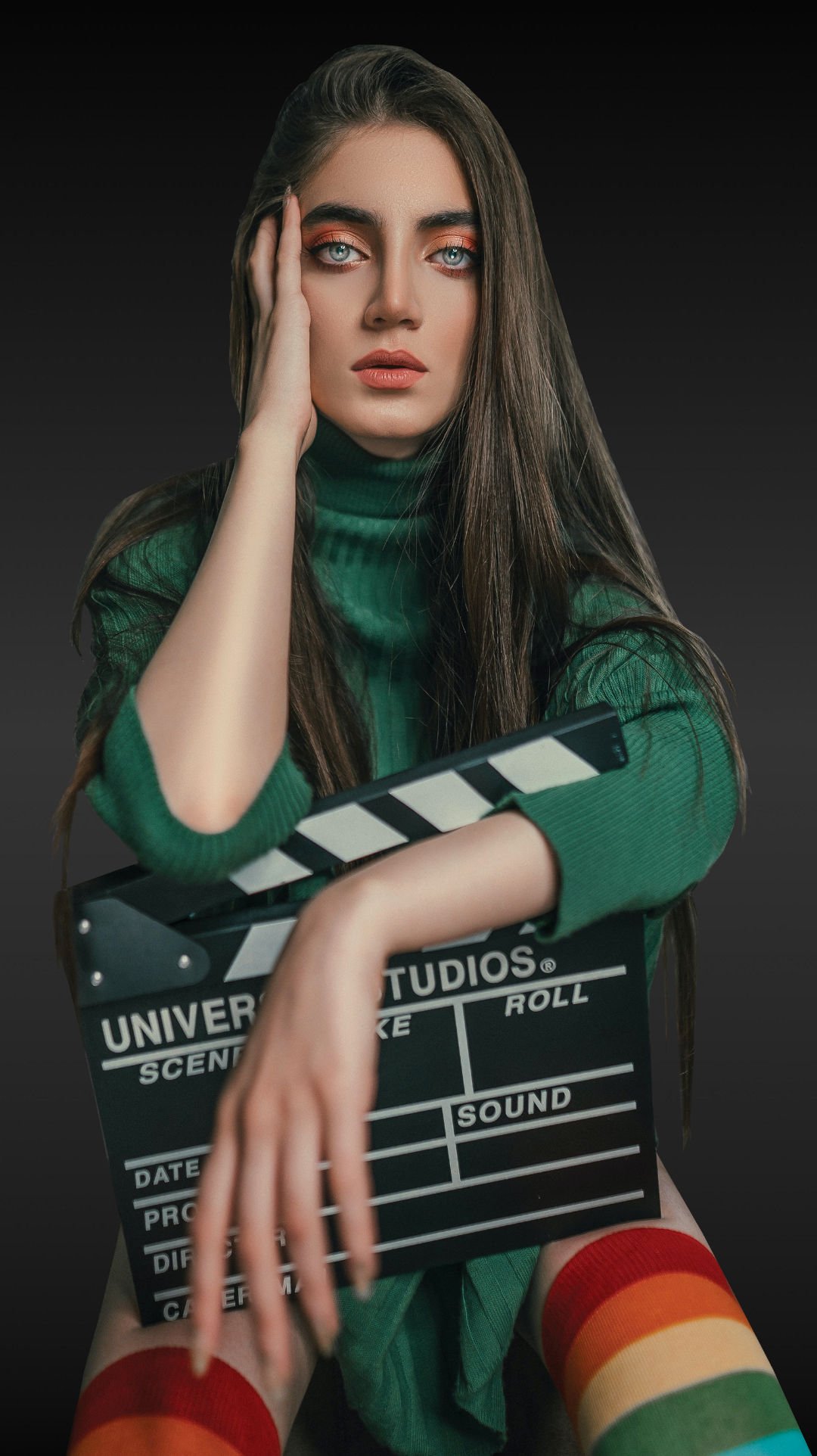

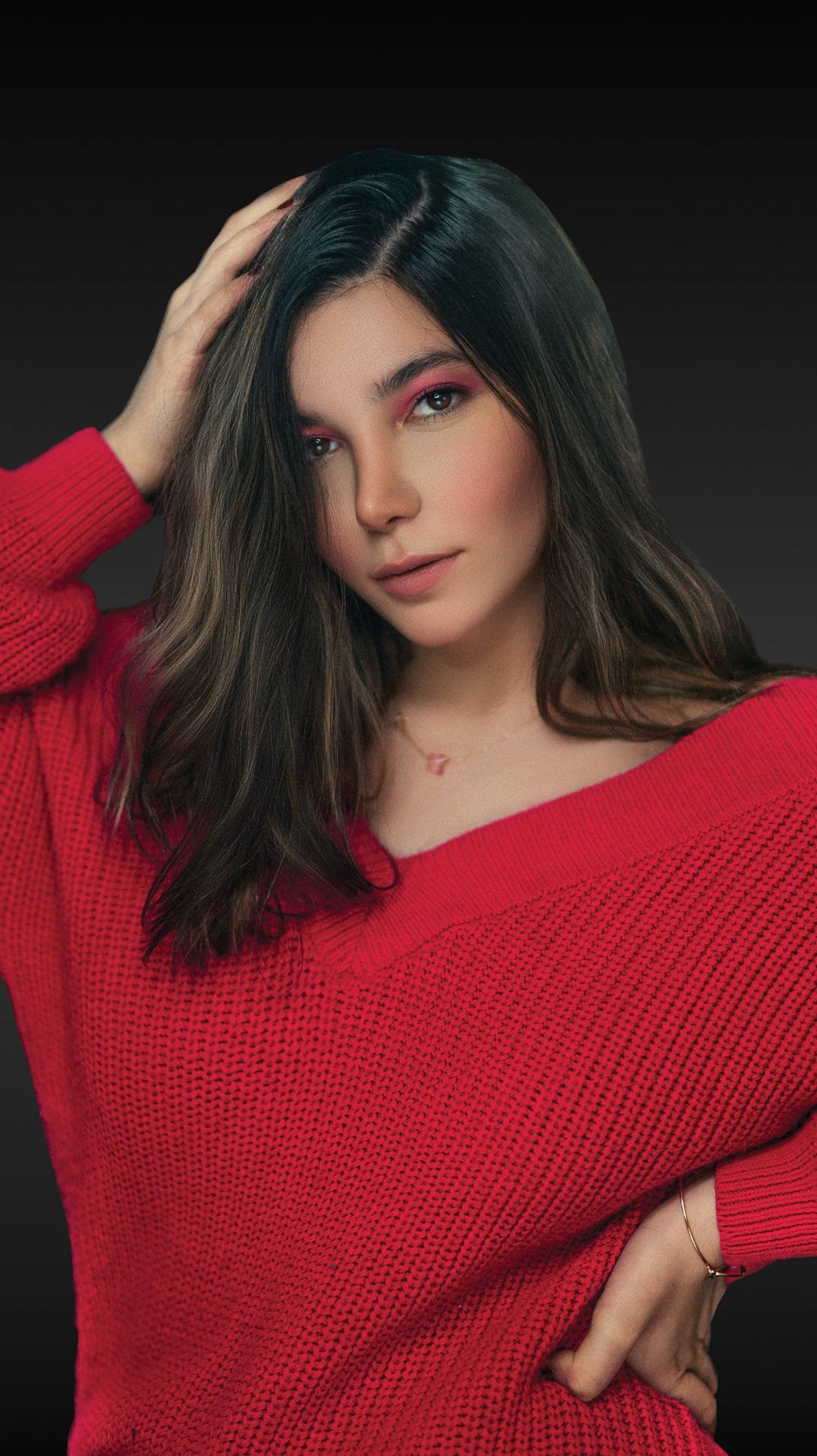


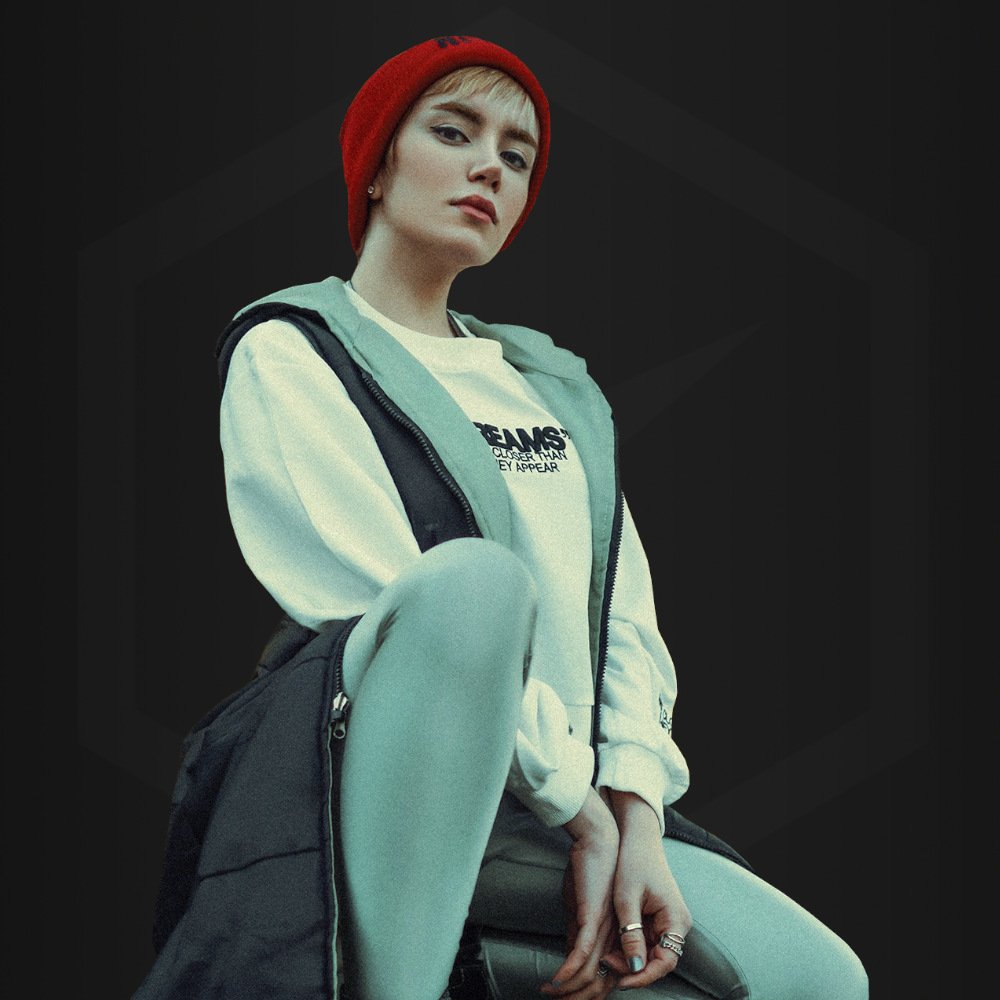







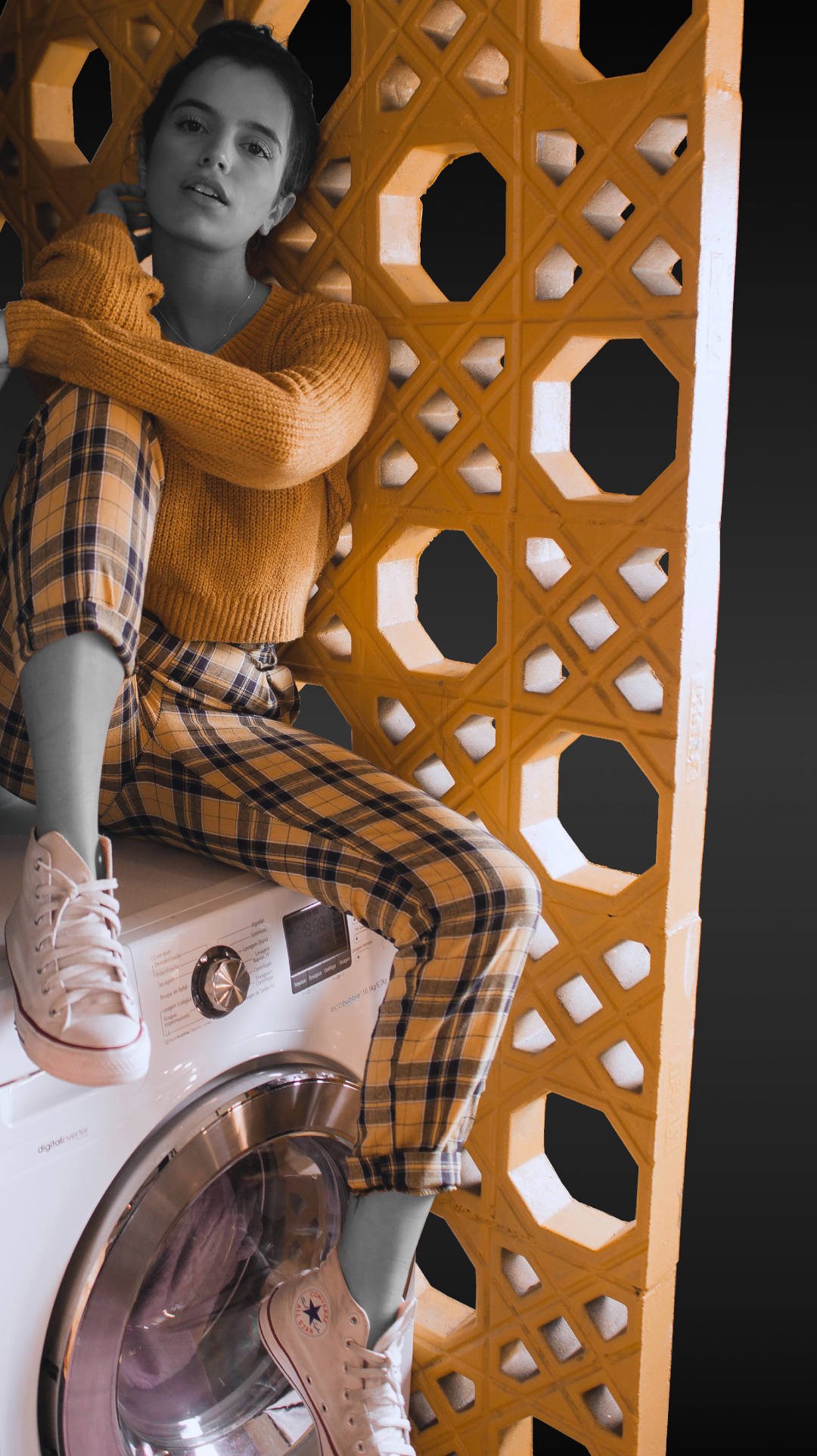
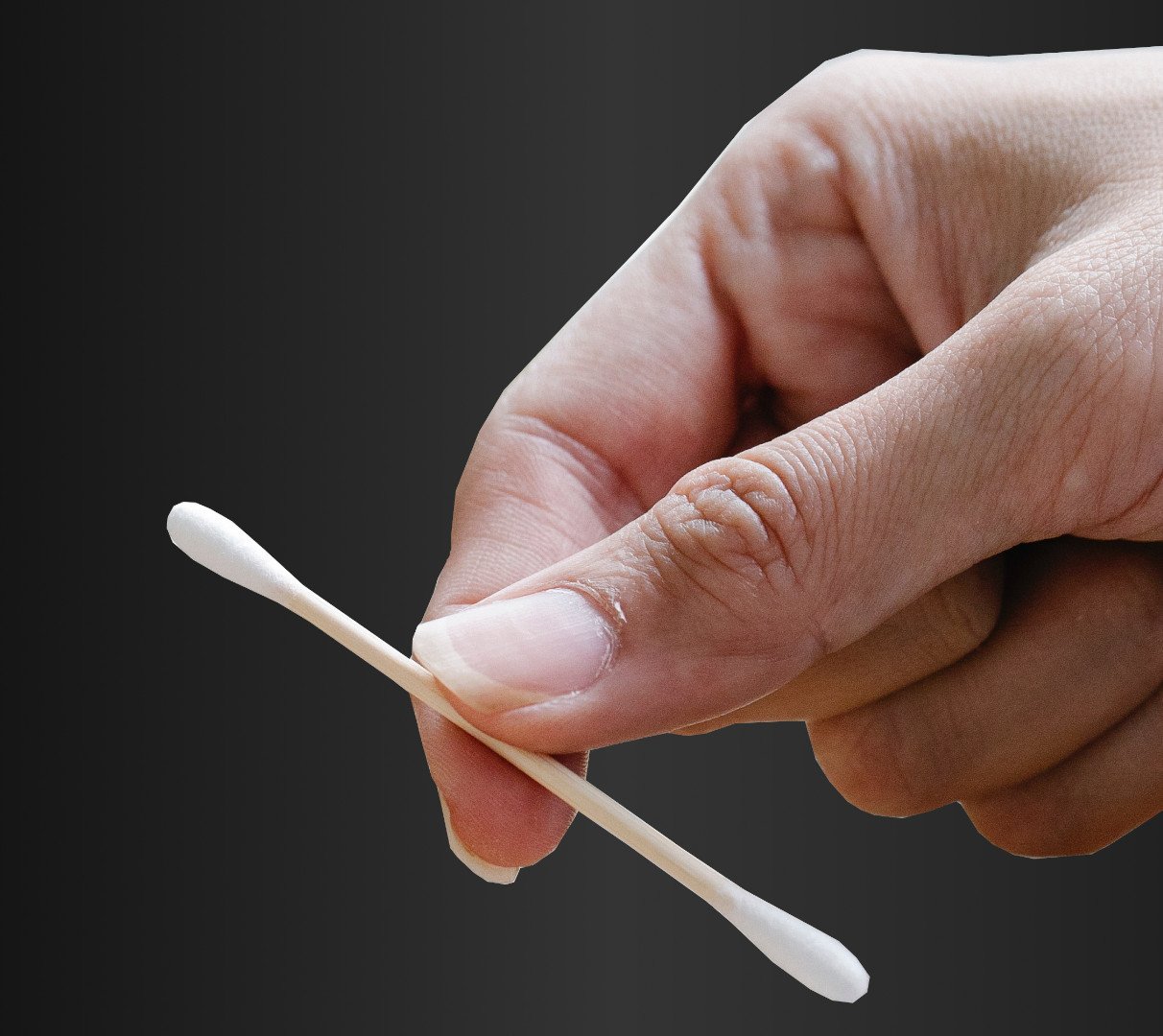






![How to Choose the Right Tie Color [Ultimate Guide]](https://images.squarespace-cdn.com/content/v1/5d91f9da52210569ede7ff3a/1647328953246-2F9L3J15P42J9N3WGMVE/COLORBUX+How+to+Choose+Neck+Tie+Color+BANNER+Thumbnail.jpg)

